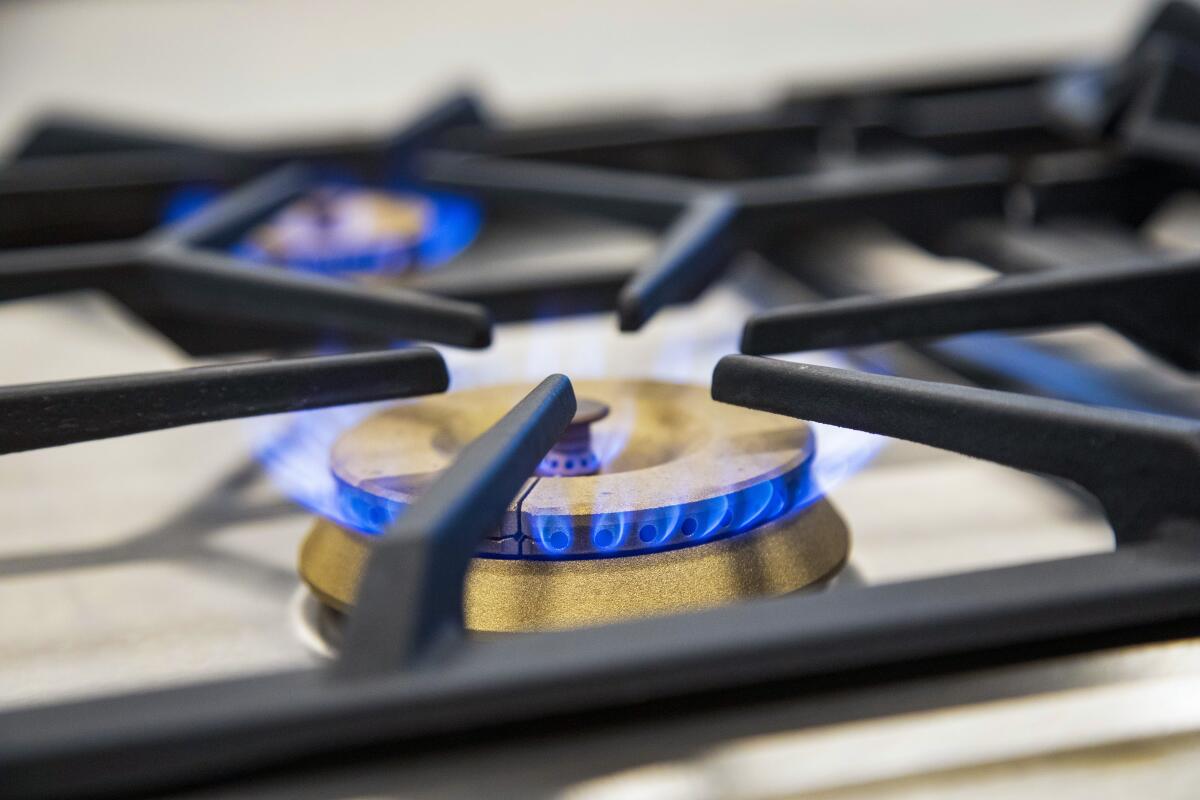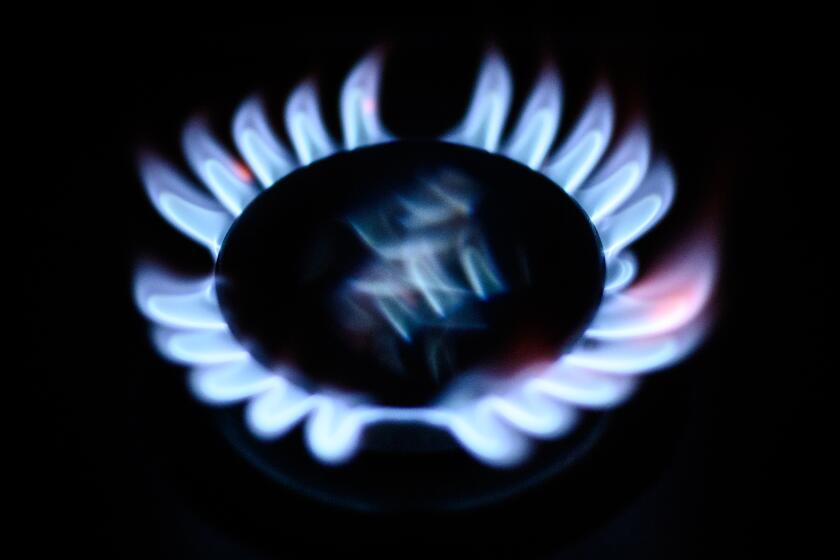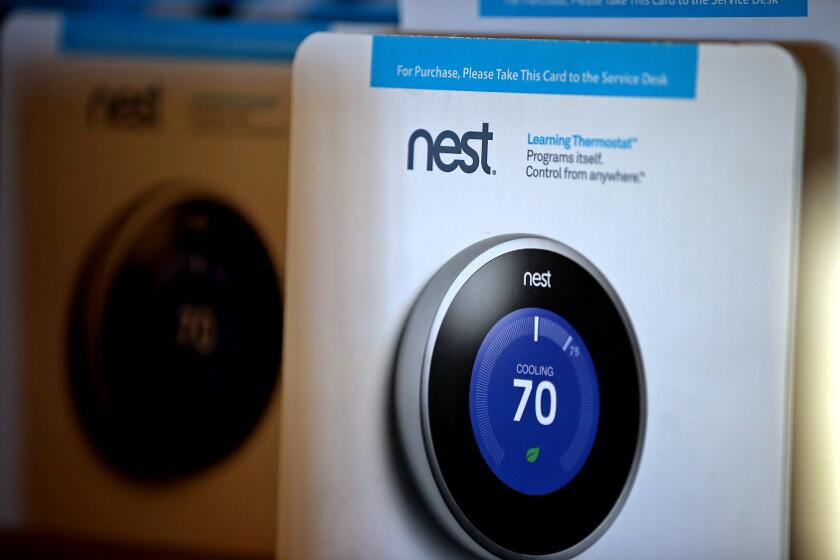Natural gas bills could be huge for Southern Californians this month. Here’s what you can do

- Share via
With natural gas prices more than doubling since December, many Southern Californians could need help paying their heating bills this winter.
Happily, there are a number of programs available to cut your gas bill. Some are aimed at low-income households, while others try to help every Californian spend less on energy while staying warm.
Southern California Gas serves the vast majority of people living in Los Angeles, Orange and Ventura counties. The main exception is in Long Beach, where the city’s Energy Resources Department provides gas service.
Both utilities offer customers a way to flatten the coming jump in their bills by spreading the costs out over a full year. This approach — called a Level Pay Plan — charges an average monthly bill based on your total gas usage in 2022. At SoCalGas, your bill will be adjusted every six months to keep up with changes in your gas usage.
SoCalGas customers can sign up for the plan by logging into their account online. Long Beach Energy Resources customers can call the utility at (562) 570-5700 to enroll.
The program shifts expenses from the winter to the summer, when people use far less gas. You’ll still pay the same amount over the course of 2023, but the bills won’t be so high now or so low in the summer.
Residential customers of Southern California Gas Co. will see bills jump, the utility warns, because of sharply higher wholesale natural gas prices. Consumer advocates cry foul.
For a shorter-term fix, Long Beach customers whose bills rise to more than double their average amount can apply for the utility’s Payment Arrangement Plan. After making an initial payment set by the utility, you can spread the rest out over 12 months or more. You can apply online, at Long Beach City Hall or by calling (562) 570-5700.
The expected increase in costs is so dramatic that many lower-income households may need more help to keep their gas service going. That’s where a number of subsidy programs from the utilities and the government come in.
These include the California Alternate Rates for Energy program, which lowers natural gas rates by 20% for qualified households. You’re eligible if you’re enrolled in a safety-net program such as Medi-Cal or CalFresh, or if your income is no more than roughly twice the federal poverty level (for example, a maximum of $46,060 for a family of three).
SoCalGas customers can apply on the utility’s website. Long Beach customers can apply at the Energy Resources site, by picking up a form at City Hall or a city library branch, or by calling (562) 570-2068.
Low-income senior and disabled residents in Long Beach may also be eligible for the Utility Users Tax Exemption Program, which offers the 20% discount and waives the 5% tax on utility services.
A recent report found that Black, Latino and low-income households in L.A. bear the brunt of utility shutoffs. Here’s what to do if you lose water, electricity or gas service.
SoCalGas also has a Gas Assistance Fund, which offers a one-time grant of as much as $100 to help qualified households pay their bill. The grants — which are distributed on a first-come, first-served basis until the fund is depleted — are available to households with incomes no greater than about twice the federal poverty level (although the limit is higher for one- and two-person households). The aid is also limited to primary residences, and the applicant must be the person whose name is on the bill.
The federal Low-Income Home Energy Assistance Program offers one-time grants to help pay your gas and electric bills or make your home more energy efficient. The amounts for eligible households range from $268 to $781, depending on income and location, and as much as $3,000 to reconnect homes whose service has been cut off because of unpaid bills.
The grants are distributed by community groups, such as the Pacific Asian Consortium in Employment and the Long Beach Community Action Partnership. To find one that serves your neighborhood, consult the state’s directory. You’ll qualify if you’re enrolled in a safety-net program or if your income is no more than 60% of the state’s median income; that limit in 2022 was $49,717 for a family of three.
A good way to reduce gas bills is to slash the amount of energy you use, although that may require some investment if you live in a drafty, aging house. SoCalGas offers a Ways to Save tool that analyzes your gas usage and offers recommendations on how to reduce it, including links to rebates to lower the cost of more energy-efficient appliances.
If you’re buying something to improve the energy efficiency of your Southern California home, there’s likely to be a government rebate to cut the cost.
Energy Resources’ website also offers energy-saving tips, even breaking them down by month, and a list of steps (many of them do-it-yourself ones) to reduce your home’s gas use.
The surge in the price of natural gas will drive up electric bills too, given that much of that power is generated by gas-fueled plants. But the increase won’t be nearly as dramatic; according to Ben Gallagher, a spokesman for Southern California Edison, residential bills for Edison customers will go up 7.2% in January.
Meanwhile, Los Angeles Department of Water and Power customers won’t see the higher natural gas prices reflected in their rates until April at the earliest, spokeswoman Mia Rose-Wong said in an email. How much rates may change then has yet to be calculated, she said, noting that the utility can shift to other sources of power to reduce the effect of the gas price surge.
Low-income Edison customers have access to several discounts, including the CARE program, which cuts Edison’s rates by 30%, and the Family Electric Rate Assistance program, which cuts them by 18%, Gallagher said. The utility also offers eligible customers one-time grants of as much as $300 from the Energy Assistance Fund, although those are available only to homes powered entirely by electricity.
Customers with electrically powered medical equipment can apply for lower rates through the Medical Baseline Program, Gallagher said. And like SoCalGas, Edison and the DWP offer a bevy of energy-saving programs, including rebates for energy-efficient home improvements.
About The Times Utility Journalism Team
This article is from The Times’ Utility Journalism Team. Our mission is to be essential to the lives of Southern Californians by publishing information that solves problems, answers questions and helps with decision making. We serve audiences in and around Los Angeles — including current Times subscribers and diverse communities that haven’t historically had their needs met by our coverage.
How can we be useful to you and your community? Email utility (at) latimes.com or one of our journalists: Jon Healey, Ada Tseng, Jessica Roy and Karen Garcia.
More to Read
Inside the business of entertainment
The Wide Shot brings you news, analysis and insights on everything from streaming wars to production — and what it all means for the future.
You may occasionally receive promotional content from the Los Angeles Times.














